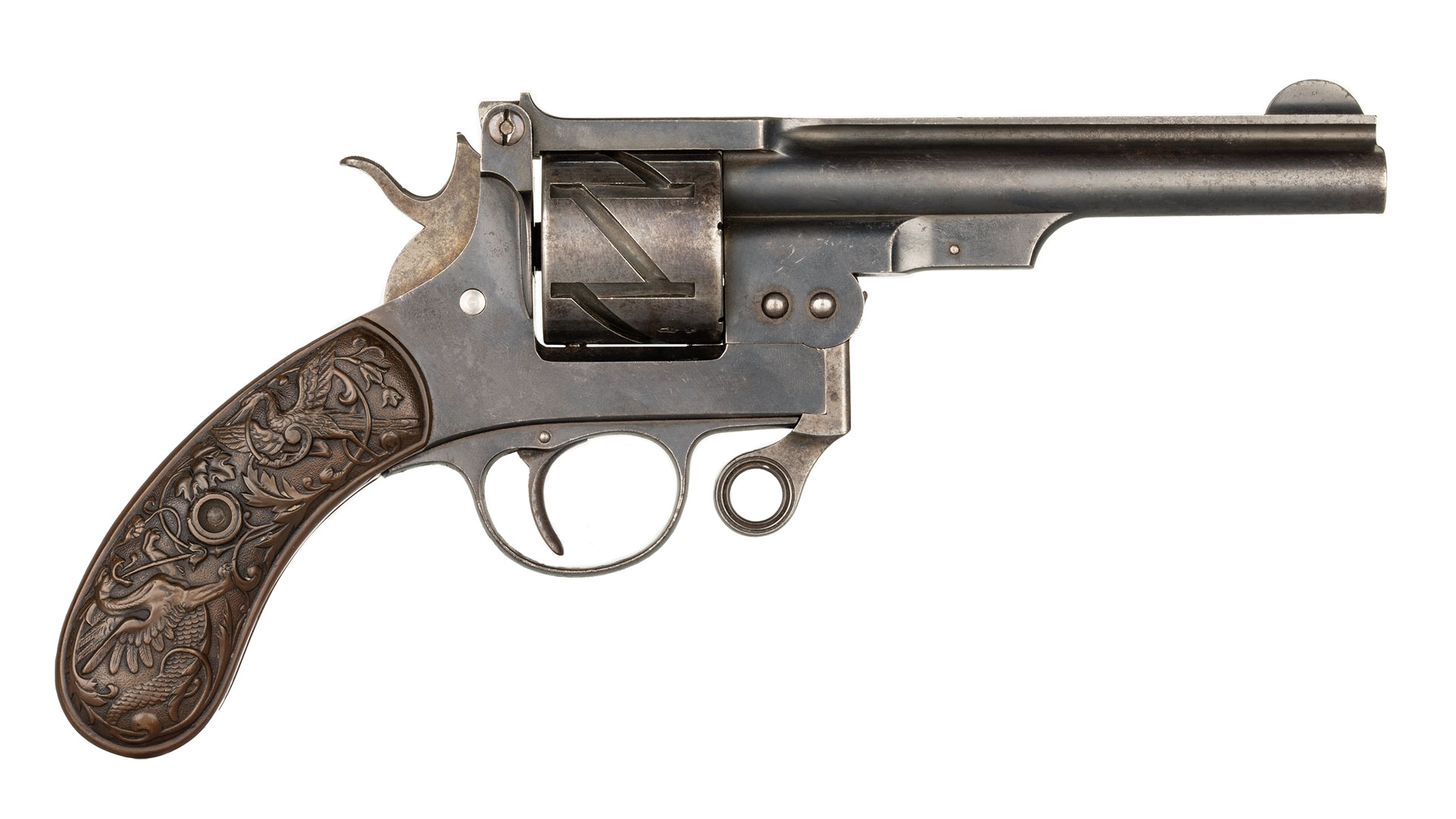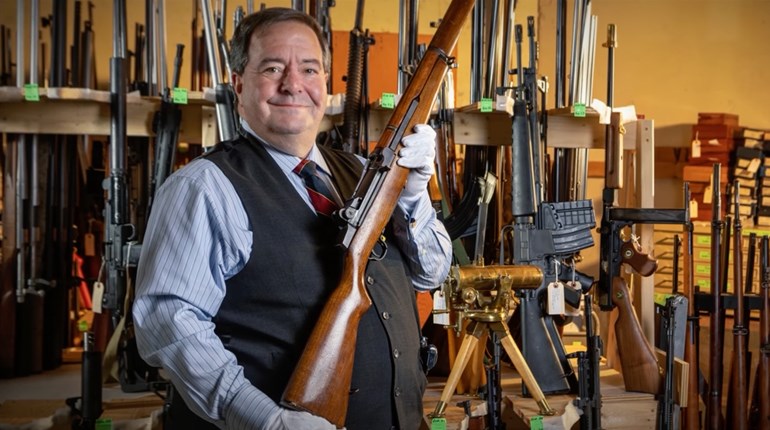
“The military handguns adopted by the Berlin government in the 1870s are distinguished by their unimportance,” said Dr. Edward C. Ezell, curator of the Armed Forces History Division of the Smithsonian’s National Museum of American History in his book, “Handguns of the World.”
My late friend and mentor, Dr. Ezell, was writing about the lack of panache evident in the German revolver designs following the Franco-Prussian War of 1871 and the eventual adoption of self-contained, centerfire, metallic cartridges in that country’s handguns. Gun collectors and historians frequently bypass the C78 and Reichsrevolvers (Commission revolvers) of the 1870s and 1880s while they skip ahead to the C96 and the new era of semi-automatics that the “broomhandle” ushered in just before the turn of the century.
And why not? If Dr. Ezell said they are unimportant, who am I to argue with him? However, that’s not to say they aren’t interesting. Personally, if you want my attention, tell me that the revolver has a series of grooves cut into the cylinder and I’m all yours, as long as there are British proofmarks on that cylinder and the topstrap says “FOSBERY”. I’ve always seen the Mauser Model C78 revolver as a distraction from my pursuit of Fosberys—close, but no cigar. Recently, however, I actually picked one up and made its acquaintance. It is a pretty neat and somewhat unique revolver design.

The Mauser brothers of Oberndorf, Wurttemberg, Germany, were best known for their Gewehr 98 bolt-action, magazine-fed rifle and its descendants, of which tens of millions have been and continue to be produced. Their work on that project began in 1866, and it was not until 11 years later that Paul Mauser turned his attention to making a revolver to offer the German military. The result was a curious-looking, single-action, six-shot revolver that functioned like no other wheelgun on earth at the time.
The cylinders of most revolvers since Samuel Colt’s invention in 1836 rotated by the use of a hand, or pawl, that engaged a notch cut into the back of the cylinder and rotated it until the cylinder stop engaged and locked the revolver in firing position. Mauser’s “zig-zag” concept used an upright “stud” on the top of the trigger assembly that, when cocked, moved the stud forward along a track in the frame, rotating the cylinder one-sixth of a turn. It was a genius design that circumvented the most common failing of most American-made revolvers, which was the breakage of the handspring leading to a failure to rotate the cylinder. Colt’s handspring was the weakest and smallest part on the company’s revolvers, and broke fairly easily, requiring immediate replacement or, as a field expedient, the user would have to point the revolver at the ground to let gravity cause the pawl to engage. Mauser’s grooved cylinder and track eliminated this issue and seemed to work effortlessly.
This Mauser revolver has a large ring-shaped lever attached to the front of the frame (remember that ring design; we will see it again on the C96 broomhandle) and when the three-position safety is in its lowest notch, the ring is pulled forward and the entire barrel and cylinder tip upward to facilitate quick unloading, by continuing to pull on the ring lever which charges the cartridge extractors and allows the shooter to simply drop in six new cartridges. Once closed, the safety lever is moved up one notch securing the gun and preventing the hammer from being cocked or the cylinder rotating. In its third, highest position, the gun is ready to be cocked and fired.
Sadly for Mauser, the Spandau Commission rejected its first attempt at a revolver design and went with what is now known as the C79 Commission revolver. Mauser sold its C78 model on the civilian market in three calibers, 7.6x20R, 9.3x25R and 10.6x24R, and continued to manufacture them until 1884.
One of the primary drawbacks to the zig-zag cut in the cylinder was that the zig and/or the zag part could easily get clogged with dirt and or debris and cause a stoppage. The revolver is made to very tight tolerances and was unlikely to stand up to battlefield conditions.
Mauser did get a contract to manufacture about 8,000 of the Commission Reichsrevolvers and eventually set the world on fire with the introduction of the C96 broomhandle semi-automatic pistol. More than a million of those were made, and then you have the Mauser 1910/1914/1934 pistols (500,000 units made) and my personal favorite, the HSc. The company also found time to pick up the slack on P-08 and P-38 manufacturing by making a million Lugers and 340,000 P-38s. From a shaky start in the handgun field, it recovered and made quite the name for itself.
Collectors who wish to acquire just one or even one each of the three frame sizes will find their work cut out for them. While an exact number of C78s produced has eluded my research capabilities thus far, I’ve yet to find one in the 3,000 serial-number range. The prices they bring at auction and in private sales speak volumes about their rarity.





































